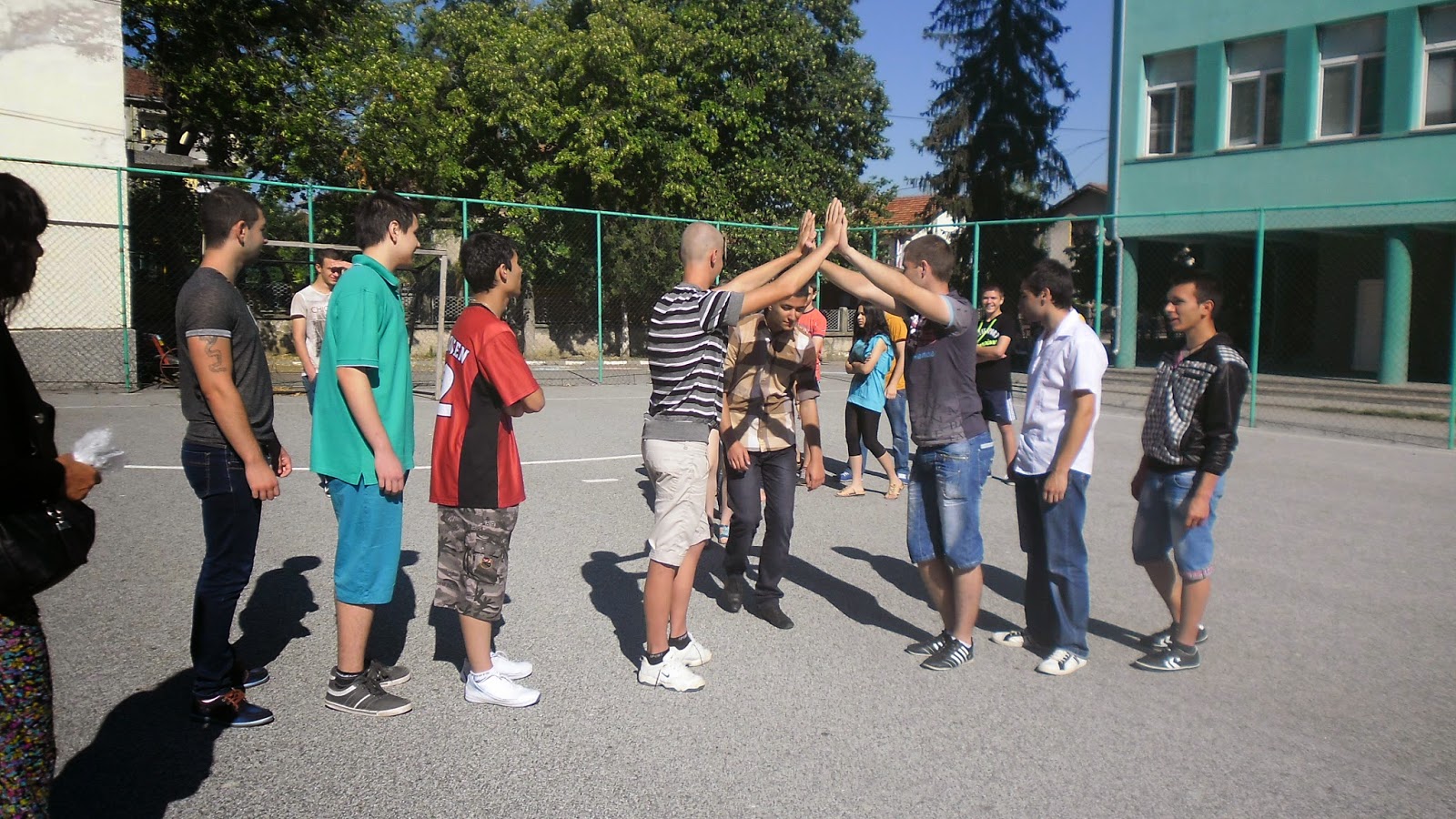Last weekend a group of students and teachers went on a 2 days trip
around Bulgaria. We aimed to visit some of the sightseeings included in the
final Guide book of the project "Building Bridges using the five senses”.
Our first stop was the Shipka
Memorial, reached by a flight of steps. It is a memorial to those who died
for the Liberation of Bulgaria during the Battles of Shipka Pass in the
Russo-Turkish War of 1877-78. After that
we went on to the town of Shipka where we visited the Shipka Memorial Church. It is, together with the other parts of the
Shipka Monument complex, dedicated to the Russian, Ukrainian and Bulgarian
soldiers.
We visited The Tomb of the
Thracian King Seuthes III which is situated in the Golyamata Kosmatka
mound, at a distance of 1 km south from the town of Shipka north from the town
of Kazanlak and The Thracian Tomb of
Kazanlak near the town of Kazanlak in the central part of Bulgaria. The guide explained that the tombs were a
part of the Valley of the Thracian Kings situated near the ancient Thracian
capital of Seuthopolis in a region where more than a thousand tombs of kings
and members of the Thracian aristocracy could be found.
The
monuments date back to the 4th century BCE and has been on the UNESCO protected
World Heritage Site list since 1979.
Our trip in this region, named The Rose Valley ended up in the town of
Kazanluk where we saw the
"Kulata" Ethnographic Complex where the calm atmosphere of the
old-times can be felt. Today a museum, the once
prominent "Hadzhienovata Kushta" belonged to wealthy rose producers.
Even today the hospitable hosts of the Complex welcomed us to taste some rose
jam in the yard, telling us stories about the past and the present of Kazanlak.
On Saturday evening in the hotel hall in Stara Zagora we had our final
meeting on the project. The students had prepared presentations with exciting
and unforgettable moments from the various activities held during the project.
All participants were given T-shirts and cups with the logo of the project.
On the next day we travelled to the town of Plovdiv where we visited the Regional Ethnographic museum in the Old
Town. The Museum has a collection of over 40,000 exhibits distributed
among the Agriculture, Crafts, Fabrics and
Clothing, Furniture and Interior, Musical Instruments, Religious Items and
Works of Art funds. In addition, the museum boasts a scholarly archive, a
library and a photo archive.
Then we went on to the
Amphitheatre which is one of the biggest cultural sights of this city,
located in the central southern part of the country. The Ancient Theatre in
Plovdiv was built in the early second century AD, at the time of Emperor Trajan
(98-117). In those ancient centuries it was one of the most significant public
buildings Trimontium. The building is distinguished by its remarkable
architecture, magnificent design and representativeness. The stands of the
Ancient Theatre could accommodate 5 to 7, 000 spectators from all over who have
great vision to the stage, which was generously decorated with friezes,
cornices and statues.
After an hour walk through Plovdiv we travelled to Kalofer, the home
town of the patron of our school Hristo Botev. The town of Kalofer is located
near the Central Balkan National Park and the name of the town is connected
with the name of Hristo Botev (lived 1848 – 1876) – a genius poet, a brilliant
publicist, ideologist and leader of the national liberation activity for the
liberation of Bulgaria from Ottoman Dominion.
Hristo Botev was born in Kalofer in 1848. A museum, dedicated to him,
was built in Kalofer. The national
museum “Hristo Botev” was built at the place, where the last house of the
Botev family used to be and stores, preserves and displays the personal
belongings, documents, publications and works of the Bulgarian artist, along
with other materials, associated with the life and work of Hristo Botev, his
family and his friends.
Our school trip ended up with songs, laughter and chatting on the way
home. Everyone was excited but a bit upset because of the fact that this school
trip was the last activity of the project, truly hoping that the built bridges
during the project will last in the following years.
.jpg)
.jpg)
.JPG)
.JPG)
.JPG)

.JPG)
.JPG)
.JPG)
.JPG)
.JPG)
.JPG)
.JPG)
.JPG)
.JPG)
.JPG)
.JPG)
.JPG)
.JPG)
.JPG)
.JPG)



















































